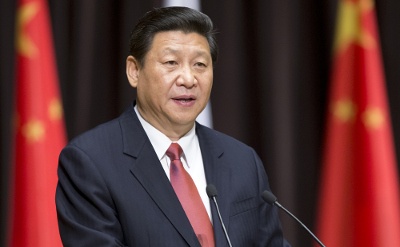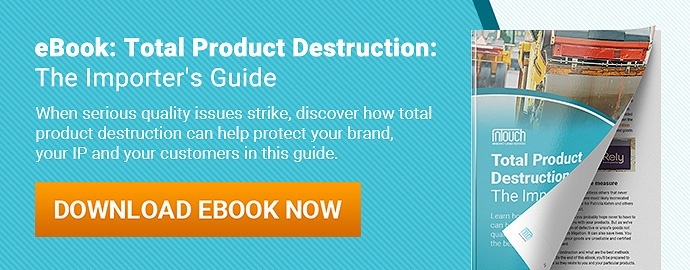Best in Manufacturing – March 18, 2018
Each Sunday, we publish a list of top articles and other content related to manufacturing in areas like quality control, product development, supply chain management, sourcing, auditing and law.
1. IP in China: you’re giving it away
Days. Months. YEARS…have gone into formulating your product. After toiling for so long on design, you’ve decided the time has finally come. No more prototypes from your local fabricator. It’s time to go to China to get golden samples and molds made to prepare for mass manufacturing.
 You sign a purchase order with a Chinese factory that stipulates a small production run of your item. You pay the deposit and a few months later you get the goods. Everything seems fine, right? Wrong.
You sign a purchase order with a Chinese factory that stipulates a small production run of your item. You pay the deposit and a few months later you get the goods. Everything seems fine, right? Wrong.
Purchase orders are no means to protect your intellectual property.
Without adequate contracts in place, you leave your designs and technology open for copying.
To fully understand this scenario, think from the point of view of the Chinese manufacturer. You may have invented the product, but the factory had to use its engineers and product designers to prepare it for mass manufacturing. The manufacturer designed and fabricated the molds and prototypes.
Whether this is fair to the original creator is a separate matter that courts aren’t likely to care about. What IS important is who owns the intellectual property. And in the scenario described above, courts will likely side with the Chinese manufacturer… unless you have adequate protection in place.
How do you protect your intellectual property and avoid forfeiting it to a Chinese factory?
This featured article recommends a few manufacturing contracts:
- An NNN (non-disclosure, non-use, non-circumvention) agreement
- A mold ownership agreement
- A product design ownership agreement
- A product development agreement (also known as a product design agreement)
- A contract manufacturing agreement
You might’ve heard from someone that China doesn’t abide by formal written agreements—that it’s all word-of-mouth contracts. Even if this were true, it’s a lot safer to have contracts in place than hot air and lofty promises from your supplier.
Get the full scoop on how to protect your intellectual property in the context of Chinese manufacturing by checking out this informative featured article in the link below:
How to Give Away Your IP in China without Realizing It – Steve Dickinson, China Law Blog
2. RFID improving your supply chain
Lean manufacturing is a popular way to improve manufacturing efficiency. Essentially, it’s concerned with eliminating waste (in terms of time and materials, for example) in a facility. And as the author of this featured article explains, radio frequency identification tags (RFID) are a great match with lean principles.
RFID can help manufacturers quickly gather information, such as:
- The location of raw materials and finished products
- Inventory levels at different facilities
- The speed of production and the time required at each stage
With this knowledge, manufacturers can more easily target the inefficient parts of their supply chain.
And these aren’t the only benefits. Imagine you have goods that need to be out of a warehouse within a certain period. With RFID, you’ll have a tool for tracking when they entered and exited your warehouse and if they’re on schedule. These data can assist other parts of the supply chain to better control demand for raw materials and desired production quantities.
RFID is helpful in a retail setting, too. Companies can use RFID to examine the shopping habits of customers and compare demand of one store to another, which helps management determine where more goods should be sent.
Curious about RFID in your supply chain? Check out the full article in the link below:
RFID and Lean Manufacturing Are a Perfect Pair – Megan Ray Nichols, Manufacturing.net
3. 5G technology in manufacturing
Are you familiar with 5G?
I’m not talking about measurements in terms of grams. 5G isn’t some undiscovered hip-hop artist. Joking aside, what I’m referring to is the fifth generation of cellular networking, and it holds great potential for manufacturers.
Industry 4.0 will bring huge swaths of data. All those data will mean nothing if machines can’t communicate them quickly and reliably. That’s where 5G steps in.
Imagine the case of robots. On production floors, 5 G can help with robotics in the form of:
G can help with robotics in the form of:
- Connectivity: Robots won’t need fiber tethering
- Reaction time to discrepancies in parts
- Live remote monitoring of production lines
- Low latency remote control of machines
Aside from robotics, another use case for 5G is the digital twin (see #3) and augmented reality. Comparing a real factory with a digital one will become more reliable with 5G due to the improved speeds it offers. When it comes to augmented reality, users of the technology will suffer less from choppy connections that put them seconds off from reality and the decisions they need to make.
To read more about 5G in manufacturing, check out the featured article that covers the topic by following the link below:
5G in 5 Minutes for Manufacturers – Techwire Asia, Soumik Roy
4. The huge part of the U.S. supply chain economy no one’s talking about
Whenever discussions simmer over how to “fix” the economy, protect the middle class or create more jobs in America, people often point to reshoring outsourced manufacturing as a solution. But when the question that follows is how we can return manufacturing jobs to the U.S., we may be asking the wrong question.
According to two experts from MIT and Harvard Business School, the answer to the future of good jobs in America lies not in the supply chain manufacturing sector but in the massive supply chain services sector.
Just how important is the supply chain services sector?
The size and importance of the greater supply chain economy is daunting:
- 37 percent of all jobs in the U.S. are in the supply chain economy
- 89 percent of all patents in the U.S. are related to supply chain industries
- Average wages for jobs in U.S. supply chain industries are 37 percent higher than the national average
What’s less obvious is manufacturing only accounts for 10 percent of all employment in the supply chain economy—services make up 90 percent. The supply chain services sector also has the greatest demand for science, technology, engineering and math (STEM) expertise, an indicator of innovation potential.
America’s supply chain services sector may hold the key to greater job opportunities and a stronger economy.
How can we fully realize the promise of the supply chain services sector?
The authors of this article advocate a few major changes in economic policy they say will bolster this sector:
- Invest in skilled labor – there’s already a shortage of STEM workers in the U.S. Creating the right incentives to attract the right talent will be a major factor.
- Support localized industry clusters – just as clusters of similar producers, buyers and logistics providers has aided China’s move of their industrial value chain, co-locating complementary players in the U.S. supply chain services sector could provide a boost stateside.
- Provide improved access to capital through government support, including guaranteed loans and credit support.
Benefits for American importers and manufacturers could range from more efficient logistics, improved supply chain transparency, lower costs, advances in predictive maintenance in factories and more.
Learn more in the full article linked below:
The Supply Chain Economy and the Future of Good Jobs in America – Mercedes Delgado and Karen Mills, Harvard Business Review
5. How will Xi Jinping’s power grab affect foreign brands manufacturing in China?
This week, China’s legislature approved a constitutional amendment to abolish its presidential term limits. This move essentially paves the way for current President Xi Jinping to stay in power for life.
 Previously, Chinese presidents were limited to only two, five-year terms for a total of 10 years in power.
Previously, Chinese presidents were limited to only two, five-year terms for a total of 10 years in power.
This move could signal big changes in China’s political and diplomatic strategies. But this featured article takes a look at what this move might also mean for businesses, namely foreign manufacturers and brands operating in China.
With Xi Jinping continuing to call the shots, there will likely be continued investment in Chinese brands to become more competitive with foreign brands at home and in global marketplaces.
The Made in China 2025 initiative is one such example, which aims to advance Chinese manufacturing capabilities and brands through the adoption of smart manufacturing technologies. Foreign manufacturers in key high-tech sectors are likely to see increased competition from Chinese brands and could face overcapacity and artificially low prices in domestic markets.
Another important point this featured article mentions is a continued lack of protection for foreign intellectual property rights in China. Xi’s power grab illustrates just how far “rule of law” still has to go in China. Without adequate intellectual property protection, foreign brands in China still have to face the danger of Chinese suppliers selling their rejected goods in grey markets, among other concerns.
For foreign brands, the promise of China’s huge manufacturing industry and growing consumer market often outweighs political concerns. But this article shows China’s political and economic futures are often closely tied together, with Xi Jinping leading the charge.
Follow the link below to find out four more ways Xi’s indeterminate stay in power might continue to affect Chinese manufacturing and foreign brands operating in China:
6 Ways Xi Jinping’s Power Grab Will Impact Foreign Brands – Editorial Staff, Jing Daily
We’re constantly scanning the web for top manufacturing stories and news. If you’d like to submit an article for consideration for our weekly Best in Manufacturing, send us a message and let us know.







